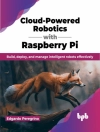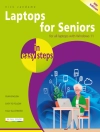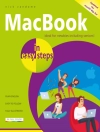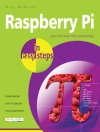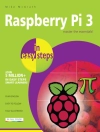Robot Operating System (ROS) is one of the most popular robotics software frameworks in research and industry. It has various features for implementing different capabilities in a robot without implementing them from scratch.
This book starts by showing you the fundamentals of ROS so you understand the basics of differential robots. Then, you’ll learn about robot modeling and how to design and simulate it using ROS. Moving on, we’ll design robot hardware and interfacing actuators. Then, you’ll learn to configure and program depth sensors and LIDARs using ROS. Finally, you’ll create a GUI for your robot using the Qt framework.
By the end of this tutorial, you’ll have a clear idea of how to integrate and assemble everything into a robot and how to bundle the software package.
Lentin Joseph
Learning Robotics using Python [EPUB ebook]
Design, simulate, program, and prototype an autonomous mobile robot using ROS, OpenCV, PCL, and Python
Learning Robotics using Python [EPUB ebook]
Design, simulate, program, and prototype an autonomous mobile robot using ROS, OpenCV, PCL, and Python
Придбайте цю електронну книгу та отримайте ще 1 БЕЗКОШТОВНО!
Мова Англійська ● Формат EPUB ● Сторінки 280 ● ISBN 9781788629973 ● Розмір файлу 19.1 MB ● Видавець Packt Publishing ● Країна GB ● Опубліковано 2018 ● Завантажувані 24 місяців ● Валюта EUR ● Посвідчення особи 6419198 ● Захист від копіювання без





